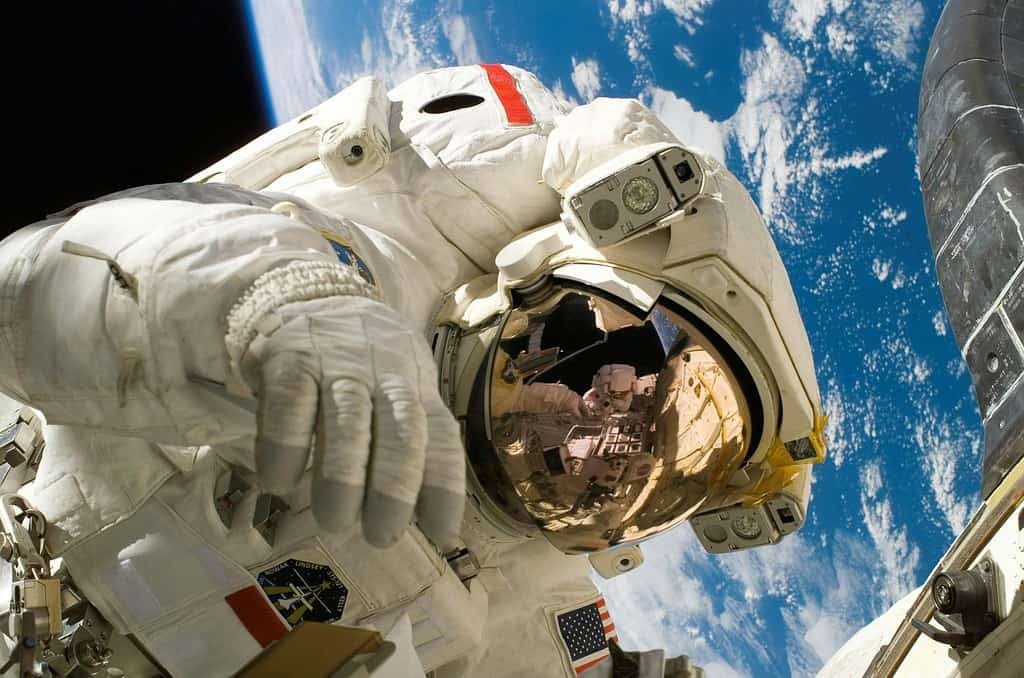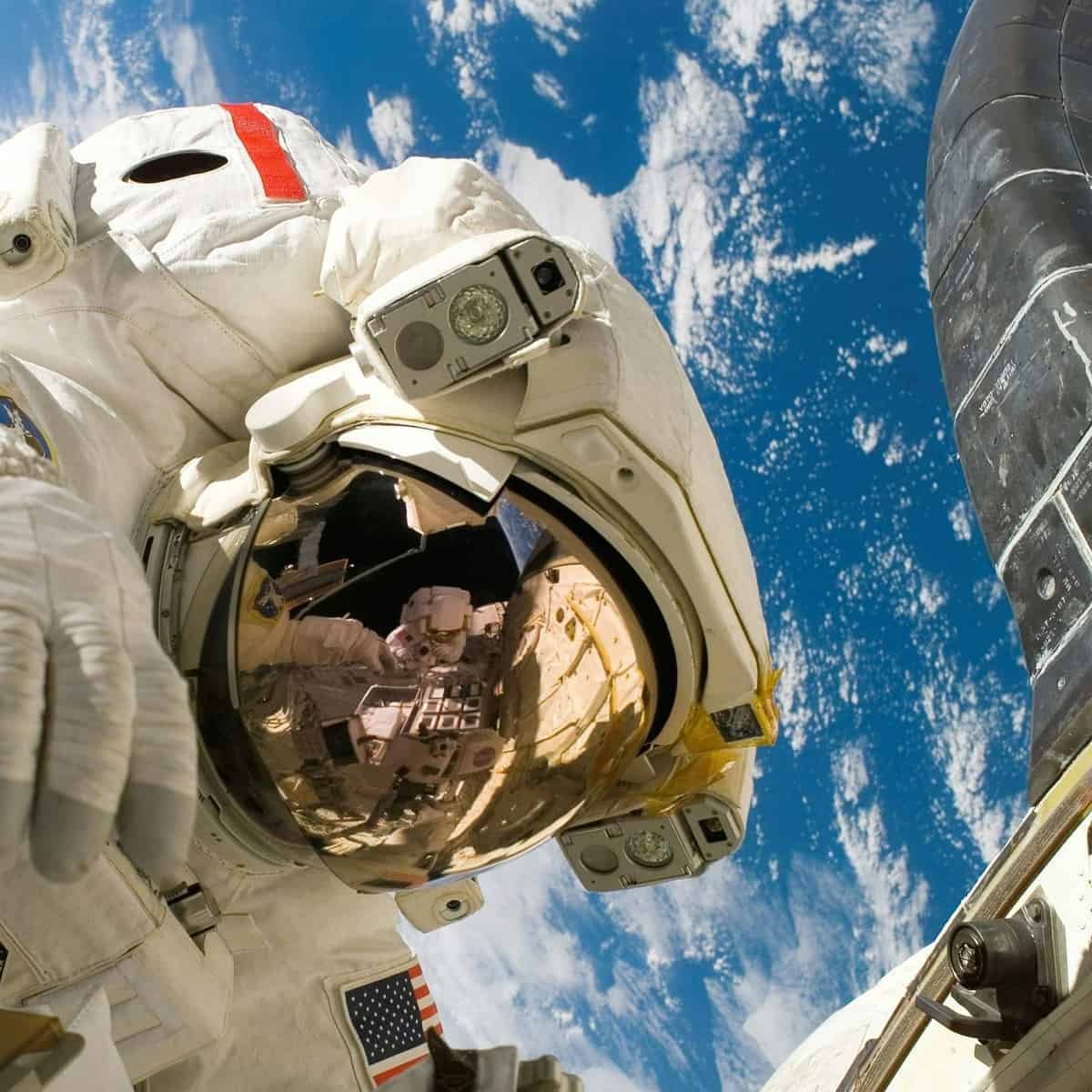Manufacturing goods in space, also known as in-space manufacturing or space manufacturing, is a burgeoning area that has the potential to revolutionise both the industry and the exploration of space. By taking advantage of the one-of-a-kind conditions that exist in space, such as the absence of gravity and the absence of air, scientists and engineers are investigating novel approaches to the production of a wide variety of materials and products that are either difficult or impossible to create on Earth. The following are some important factors to take into consideration:

Microgravity and Vacuum Conditions:
It is important to note that the absence of gravity and the vacuum environment. That exists in space both provide distinct benefits for manufacturing operations. Because the effects of buoyancy, sedimentation, and convection are reduce in microgravity. It is possible to exert a greater degree of control over the things that are being process and the materials themselves. The manufacturing of purer materials and products of higher quality is make possible by vacuum conditions, which minimise the need for airlocks and reduce the amount of contamination in the environment.
Additive manufacturing, also known as 3D printing, Additive manufacturing, also known as 3D printing, is a technique that shows great potential for industrial production in space. A wide range of materials, including polymers, metals, ceramics, and composites. IT can be utilise by 3D printers in order to create intricate structures and designs. It would be possible to employ 3D printers in orbit to build spare parts, tools, and even full spacecraft components on demand, which would reduce the requirement for resupply missions from Earth.
Metallurgy and Alloy Development:
The microgravity environment of space enables the production of new and advanced materials, such as metals and alloys, with qualities and features that are unique to themselves. Scientists are able to manufacture materials that are superior to their terrestrial counterparts in terms of strength, weight, and resistance to corrosion and wear. This is accomplish by optimising the production conditions and alloy compositions.
Manufacturing of Biological and Pharmaceutical Products:
The manufacture of biological and pharmaceutical products has the potential to be revolutionise by manufacturing that takes place in space in the future. Microgravity allows researchers to cultivate tissues, organs, and even entire creatures with superior features, such as higher cell density, improved tissue organisation, and faster growth rates. Microgravity also allows for the cultivation of biological organisms. It is also possible that the absence of gravity will result in the creation of novel medicine formulations and therapeutic agents that have improved efficacy and stability.
Manufacturing Facilities in Space:
Both public and private organisations are working to construct manufacturing facilities in space. Some examples of these facilities include the Additive Manufacturing Facility (AMF) of the International Space Station (ISS) and the Made in Space Archinaut project. These facilities intend to demonstrate the practicability and capabilities of manufacturing technologies. That can be use in space. As well as to pave the road for commercialization and production on an industrial scale in space.
The production of propellants, life support systems, and construction materials for space habitats. And infrastructure might be accomplish through the utilisation of space resources. This could be accomplish by the combination of in-space manufacturing. With the utilisation of space resources, such as water from asteroids or the Moon. Through the utilisation of local resources, space missions have the potential to become more self-sufficient and sustainable. Thereby lowering their dependency on resources derived from Earth.
Manufacturing in space could make it possible to construct large-scale structures and habitats in space. This would be referre to as space-based construction. It is possible, for instance, to employ 3D printers to construct lunar bases, space stations, and even components of spacecraft out of materials that are readily available in the area. In addition to providing support for future space exploration missions, this could make it easier for humans to remain in space for an extended period of time and to colonise it.
Research and Development in Space:
Manufacturing in space offers a one-of-a-kind platform for performing research and development in a variety of sectors, including materials science, biology, and others. It is possible for scientists to obtain new insights and develop unique technologies that have uses both on Earth and in space if they research the impact of microgravity and vacuum conditions on materials and processes.
In conclusion:
in-space manufacturing goods has the potential to revolutionise both space exploration and industry. This is because it can make use of the one-of-a-kind environment that space provides in order to manufacture innovative materials, biological products, pharmaceuticals, and other things. Consequently, this could make it possible for space missions to be self-sufficient and sustainable; it could make the construction of space-based infrastructure easier; and it could provide support for the long-term colonisation of space. Manufacturing in space will become an increasingly essential component of humanity’s efforts to investigate and make use of the resources that the cosmos has to offer as technology continues to improve.
Electronics and Semiconductor Manufacturing:
The production of semiconductor devices and electronic components could undergo a revolutionary change if in-space manufacturing were implemented. Microgravity conditions make it possible to have precise deposition of thin films, the formation of crystals of high quality, and the manufacturing of miniaturised components that have improved performance. These technological improvements may result in the production of electrical gadgets and microprocessors that are both faster and more efficient, which could be used in commercial products and applications in the space sector.
Devices for Optical and Photonic Applications:
The creation of advanced optical and photonic devices, such as lenses, mirrors, and optical fibres, could be made possible by the use of in-space manufacturing. These devices would have greater performance and precision. The absence of gravity-induced distortion and flaws makes it possible to manufacture optical components of high quality, which is something that is very challenging to accomplish on Earth. Space telescopes, communication systems, and laser-based technologies are all potential applications for these devices, which might be employed for both scientific and commercial objectives.
Energy Generation and Storage:
Manufacturing in space has the potential to make a contribution to the development of more advanced technologies for energy generation and storage techniques. When it comes to producing high-efficiency solar cells, lightweight batteries, and fuel cells for spacecraft and space habitats, for instance, experts are investigating the possibility of using in-space manufacturing and its implementation. These technologies have the potential to make it possible to develop energy solutions that are both sustainable and efficient for long-duration space missions and future space settlements.
Nanotechnology and Advanced Materials:
Manufacturing goods in space has the potential to speed up the development of nanotechnologies and advanced materials that have qualities and applications that are unique to themselves. Researchers are looking at the possibility of synthesising novel materials under microgravity circumstances. Some examples of these compounds are carbon nanotubes, graphene, and nanostructured materials. It is possible that these materials could find use in a variety of industries, including aerospace, electronics, healthcare, and others.
Manufacturing goods in space has the potential to revolutionise both bioprinting and tissue engineering. Bioprinting is a manufacturing process that involves printing on biological materials. Researchers have the ability to create complex biological structures, such as tissues, organs, and blood vessels, with enhanced characteristics and functionality by utilising conditions that are similar to those of microgravity. The manufacture of bioengineered organs for transplantation, pharmaceutical testing, and potential applications in regenerative medicine could be made possible as a result of these breakthroughs.
Environmental and Health Monitoring:
Manufacturing goods in space has the potential to make it easier to construct more sophisticated sensors and monitoring systems for use in environmental and health applications. For instance, researchers are investigating the possibility of using in-space manufacturing to build miniaturised sensors for the purpose of monitoring air quality, radiation levels, and microbiological contamination in spacecraft and space habitats. These technological advancements have the potential to enhance the safety and well-being of astronauts, as well as provide support for extended space missions.
The manufacturing process that takes place in space presents a one-of-a-kind educational opportunity that can be utilised to engage students and the general public in the fields of science, technology, engineering, and mathematics (STEM). Educational programmes and initiatives, such as student competitions, workshops, and demonstrations, have the potential to motivate the next generation of scientists, engineers, and innovators to pursue professions in the field of space exploration and manufacturing in space.
In conclusion:
the manufacturing goods utilisation of the one-of-a-kind environment that space provides for the production of new materials, electronics, photonics, energy technologies, biomedical products, and environmental monitoring systems has the potential to revolutionise a variety of different businesses. It is possible that these technologies will have far-reaching implications for space exploration, commercial applications, and scientific study as technology continues to progress and as capabilities for manufacturing in space mature.

